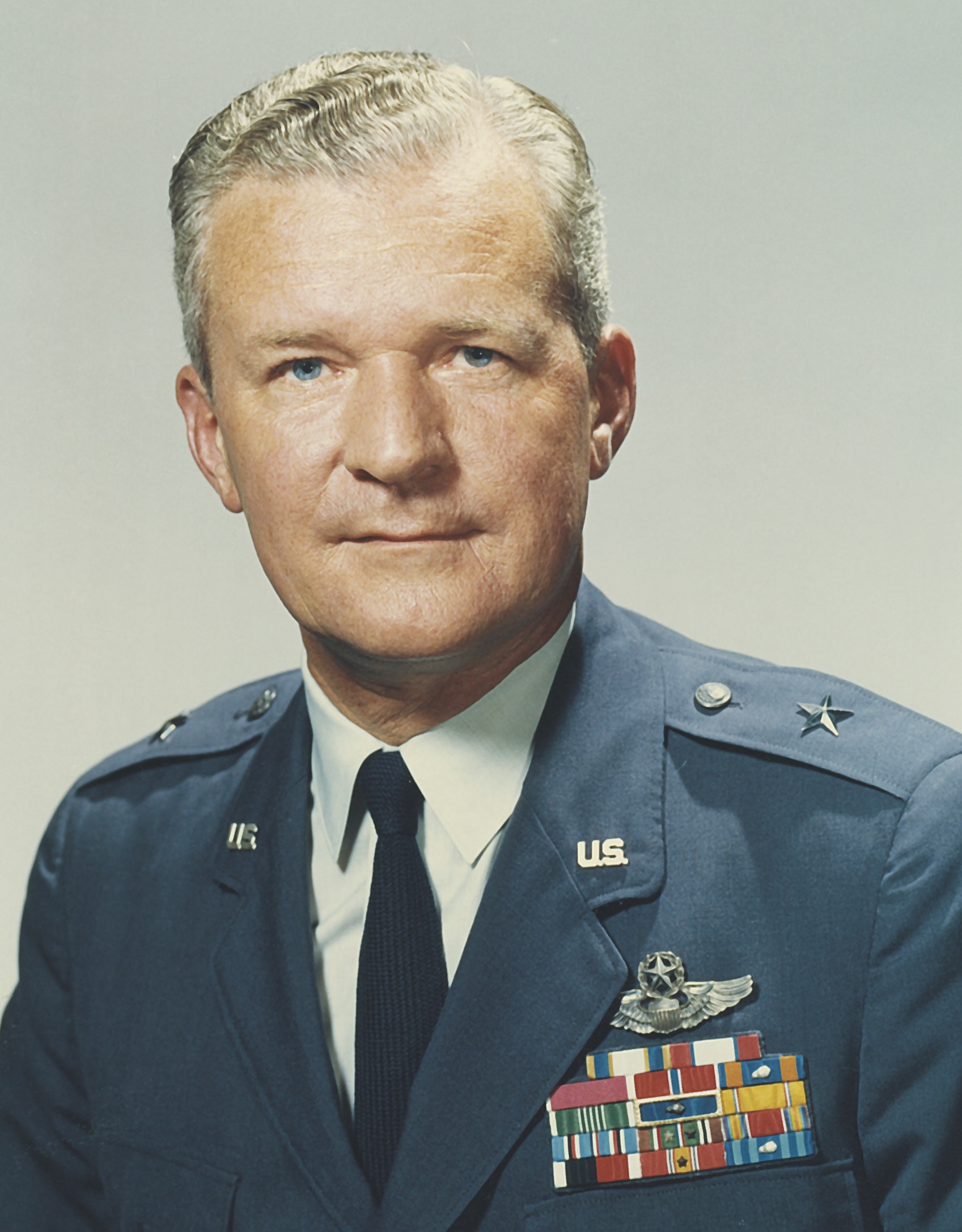Home Index
 Brigadier General
Brigadier General
Robert F. McDermott
Permanent Professor 1957–1968
Vice Dean of the Faculty 1954–1956
Dean of the Faculty 1956–1968
B.S., United States Military Academy
M.B.A., Harvard University
Bob McDermott, “McD,” the Academy’s 1st Permanent Professor, was born in Boston, Massachusetts, in 1920. He attended Norwich University from 1937 to 1939 and received a Bachelor of Science degree from the United States Military Academy in January 1943. He initially served as a fighter pilot and Assistant Group Operations Officer in the United States. From February 1944 until September 1945, McD flew 61 combat missions in the European Theater and served as Operations Officer for the 47th Fighter-Bomber Group. From 1945 to 1947 he served as a Personnel Staff Officer in HQ US Forces, European Theater. In 1947 he was assigned as a Personnel Staff Officer, Schools Branch, HQ USAF, Washington, DC. In 1948 he entered Harvard University and earned a Master’s degree in Business Administration in 1950. He then was assigned as an Instructor in the Department of Social Studies at the US Military Academy. As an Assistant Professor McD wrote several handbooks for service personnel on insurance and personal finance that were revised by the West Point Department of Social Sciences in editions published as late as 1965. His department head, a West Point classmate of General Harmon, the first USAF Academy Superintendent, recommended McD to General Harmon for his faculty. Joining the Academy at its inception in 1954, McD served as Professor and Head of the Department of Economics with additional duty as the Vice Dean of the Faculty. In 1956 he was appointed the Dean of the Faculty, retaining his Department of Economics position as an additional duty. McD became the first USAF Academy Permanent Professor in September 1957 and the first permanent Dean of the Faculty in September 1959, which included promotion to brigadier general. He was Dean of the Faculty for the first 10 graduating classes of the Academy. For his numerous innovations at the Academy, many of which also were adopted by its sister service academies, McD has been called the “Father of Modern Military Education.” Most notable of these innovations was the 1957 introduction and development of a curriculum enrichment program that broke from the military education mold set by Thayer at West Point nearly 150 years earlier. This new curriculum introduced elective courses that motivated, qualified cadets could take in addition to the prescribed curriculum previously followed by every cadet. This enabled the initial offering of majors in International Studies, Military Management, Basic Science, and Engineering Sciences. In the graduating Class of 1962, one cadet earned three majors, 35 percent earned two majors, and 35 percent earned one major. Later, while maintaining a balanced core program that ensured a well-rounded academic core foundation, McD introduced the concept of all cadets pursuing a major in an area of interest to them. By 1966 all cadets graduated with a Bachelor of Science degree and at least one major. Other innovations that McD introduced were a Tenure Associate Professor program that aimed to be comparable with civilian institutions by providing tenure for 10 percent of the faculty with PhDs, a sabbatical leave program so tenured faculty could stay current by rejoining the rest of the Air Force for a year, a summer research program for both cadets and faculty so they could help solve current Air Force problems, a successful program to assist cadets in pursuing nationally recognized graduate scholarships, and a faculty research program so faculty could remain at the cutting edge of their disciplines while engaging cadets in current AF research endeavors. McD’s efforts also led to two notable Academy “firsts.” The North Central Accreditation Board accredited the Academy before its first graduating class in 1959. And the Academy’s then five undergraduate engineering degrees were the first service academy degrees accredited by the Engineers’ Council for Professional Development (now the Accreditation Board for Engineering and Technology). McD retired in 1968 to join the United Services Automobile Association (USAA) and become its Chief Executive Officer.
McD headed USAA, now an insurance and diversified financial services company, for 25 years. As Chairman and CEO, McD guided USAA to become a nationally recognized leader in the services sector. Under his leadership, USAA grew from the 16th to the 5th largest insurer of private automobiles in the nation. It also grew to be the nation’s 4th largest homeowner insurer. During his tenure, USAA’s owned and managed assets rose from $206 million to over $30 billion. In 1993 he retired and was appointed Chairman Emeritus. McD remained active in civic leadership roles. Among the honors he received are five honorary doctorate degrees, academic chairs endowed in his name at the US Military Academy and US Air Force Academy, an elementary school and university health science center building named after him, and a section of I-10 running through San Antonio, TX, named the McDermott Freeway. The Academy Research and Development Institute supports The Robert F. McDermott Endowed Chair in Academic Excellence at USAFA. Robert F. McDermott died in 2006 and is buried in San Antonio.